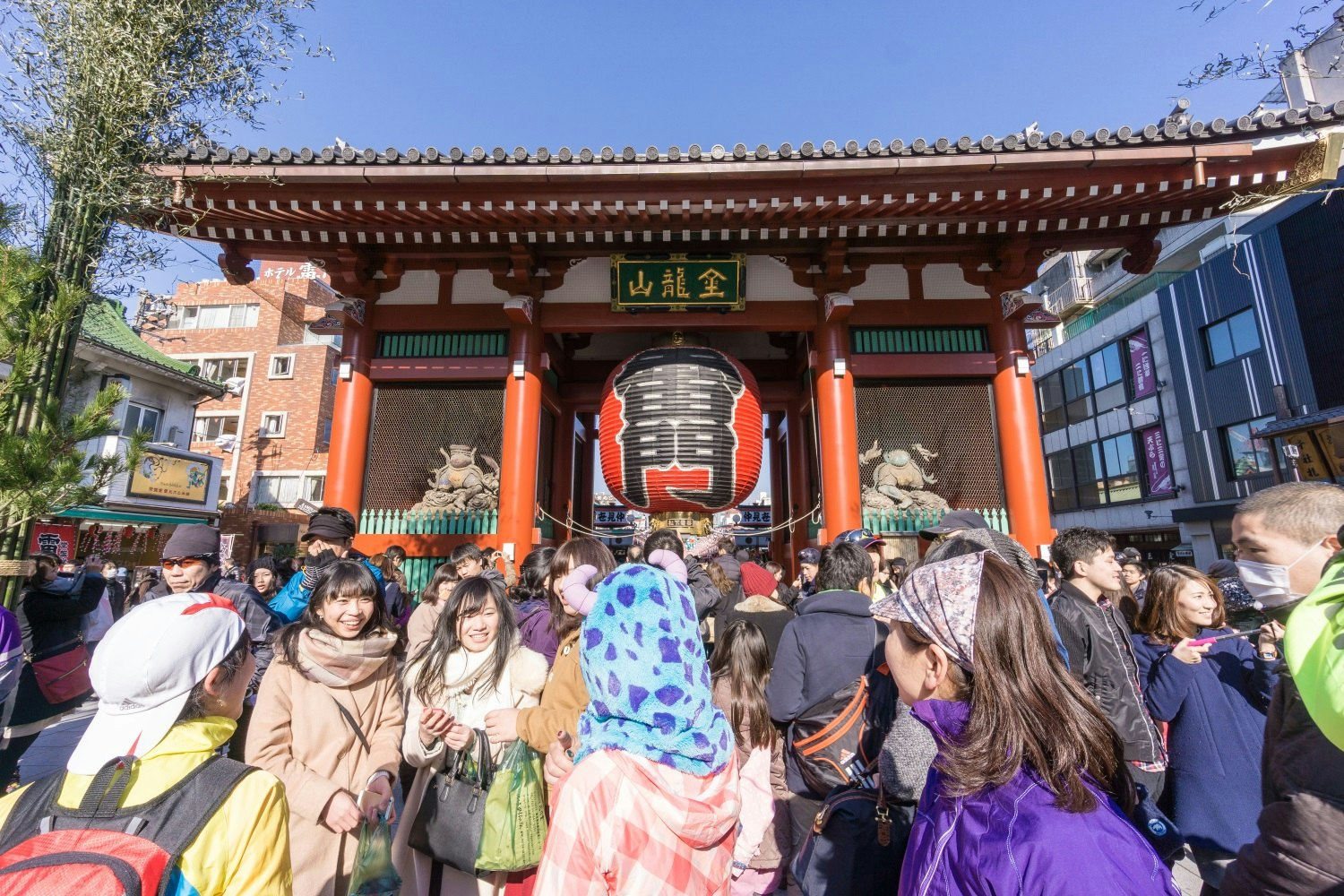
Japan dos and don'ts: etiquette tips for first-time travellers
Oct 2, 2015 • 5 min read

Japan is warm and welcoming to travellers, but its unique culture can be as inscrutable as it is intriguing for the first-time visitor. To help create a faux-pas-free journey, arm yourself with a few of these handy etiquette tips before your trip: from when to bow and take your shoes off, to when it’s OK to be a noisy eater and what not to do with your chopsticks.

Meeting and greeting
Bowing Bow politely when you meet someone, thank them, or say goodbye. The depth, duration and number of bows is something non-Japanese aren’t expected to understand and visitors are unlikely to offend if they don’t do this perfectly. If a Japanese person bows to you, an incline of the head in return will usually suffice. Japanese do sometimes also shake hands, but it’s best to wait for the opposite party to offer their hand before thrusting yours forth.
Gifts Returning from a trip, the change of seasons, and moving into a new home are among the many reasons gifts might be exchanged in Japan. For visitors, it’s a great idea to bring small gifts from your home country, especially if you’ll be staying with locals, or in case you need to say ‘thank you’ to someone during your trip. The simple gesture of sharing something from your home will be greatly appreciated – think souvenir key rings, chocolate bars, and other treats only available in your country. Avoid expensive or flamboyant offerings.
Two hands good The exchanging of business or name cards is still an important part of more formal introductions in Japan. You should use two hands when giving and receiving cards. This also goes for giving and receiving gifts.

Footwear rules
Shoes off If a building has a sunken-foyer entrance (called a genkan), and there are rows or shelves of footwear by the door, it’s a clear sign you’re expected to remove your shoes. You’ll always have to remove footwear when entering a private home, traditional accommodation (minshuku or ryokan), and temple halls. Some restaurants with tatami (woven straw matting) areas will also require visitors to take off their shoes, as will some hostels and historic sites. Wherever you’re required to remove footwear, this is non-negotiable. (If you’re uncomfortable with the current state of your socks, consider getting yourself a new supply before your trip.)
Slippers off When you take off your shoes, you’ll usually be given the option of a pair of slippers for walking around inside. These are fine on wooden and other flooring, but you should never wear slippers in a tatami room: remove them before stepping on tatami and place them at the room entrance.

Eating and drinking
Chopsticks There are a number of dos and don’ts related to the use of chopsticks. The main ones to keep in mind are to not leave chopsticks standing upright in a bowl of rice, or use them to pass food directly to another person’s chopsticks. These actions are reminiscent of rituals associated with funerals and the dead. Also avoid anything that might be considered ‘playing’ with your chopsticks (this includes using them as a spear, drumming on the table, waving them to get the waiter’s attention, and using them to get at that itch on your back).
Slurping When eating noodles in Japan, it’s standard practice to slurp them. Eat in any noodle restaurant and you’ll be surrounded by fellow diners noisily and unabashedly slurping away.
Drink up When pouring glasses from a shared bottle (eg of sake), it’s customary to pour drinks for others in your party, and allow someone else to pour yours for you, ie you don’t pour your own drink. Say kam-pai for ‘Cheers!’ before drinking.
Tipping There is no custom of tipping in Japan. Leaving a little extra cash on the table at a restaurant will often result in a waiter chasing you down the street to give it back.
Table manners Say i-ta-da-ki-mas before eating (literally ‘I will receive’, but it’s akin to saying ‘bon appetit’), and say go-chi-sō-sa-ma de-shi-ta to express appreciation after you’re finished. Be sure to throw in a few declarations of oi-shii (‘delicious!’) throughout the meal as required.
Visiting temples and shrines
Etiquette There are many, many Buddhist temples (o-tera) and Shintō shrines (jinja) across Japan and most are open and welcoming to visitors, whether or not you’re a believer. But these are still religious sites: speak quietly in the main halls, don’t poke around cordoned-off areas, and avoid dressing as though you’re out for a day at the beach.
Shrine rituals There will be a water source in front of any shrine. Before entering the shrine, use the ladles provided to pour water over your hands to rinse them, and pour water into your hand to use to rinse your mouth (spit out on the ground, not back into the water source).

Public behaviour
Quiet, please It’s considered rude to speak on your mobile phone while on trains and buses, and announcements encourage travellers to switch phones to silent mode. People also tend not to speak loudly when travelling on public transport, so as not to disturb fellow passengers.
Queuing At busy times when waiting to board a train, Japanese form an orderly queue. Train station platforms will have markings showing where the carriage doors will pull up, and may have lines drawn on the platform to guide the direction of the queues.
Sniffles It’s considered uncouth to blow your nose in public. You may also see people walking around wearing surgical-style masks – some choose to use these when they have cold or flu to help prevent passing on their ailment to others.

Language matters
Don’t assume It’s not uncommon to meet Japanese who are keen to practise their English skills, but English is not as widely understood as some visitors expect and many people will be uncomfortable or too shy to use it. It’s best not to approach people with the assumption they will be able to speak it.
Turning Japanese A few basic words and phrases in Japanese will go a long way, and locals will be disproportionately impressed by even your most tortured attempt at speaking their language. Su-mi-ma-sen (‘excuse me’, which can also be used for ‘sorry’), a-ri-ga-tō (‘thank you’), ei-go ga ha-na-se-mas ka (‘do you speak English?’), and wa-ka-ri-ma-sen (‘I don’t understand’) are all very handy for starters.
This article was first written by Benedict Walker and published in June 2013, then updated by Laura Crawford in September 2015.















